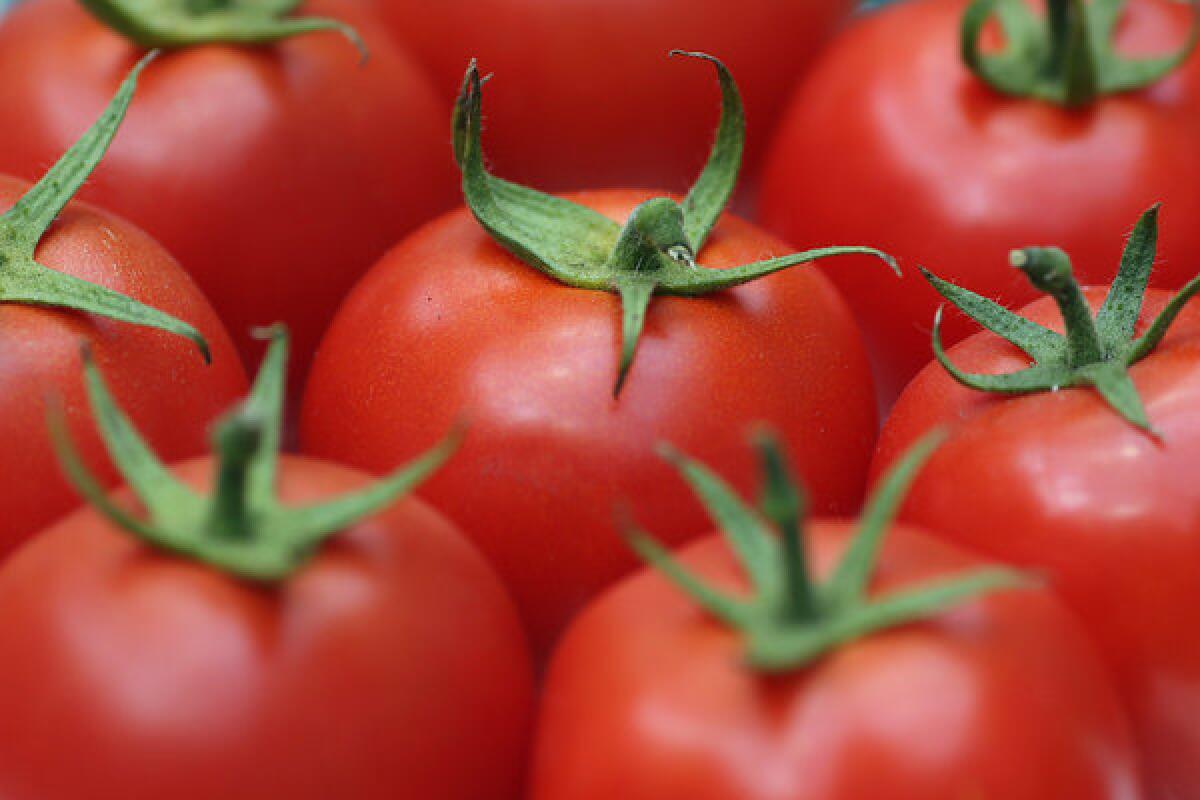Tomato flavor was helped along by a ‘jumping gene’

What makes a tomato taste good … or taste blah? Scientists have a lot still to learn about this, but they’ve made inroads.
They know that sugar matters. They know that acidity matters. Recently, a group of scientists at the University of Florida identified another factor: chemicals called volatile acetate esters. In a study of nearly 100 heirloom tomatoes, the higher the level of these chemicals in the fruit, the less people like them.
Volatile esters are chemicals that impart fruity flavors: Bananas get their signature aroma from a type of volatile ester, as do apples.
Green tomatoes have lots of these esters. They don’t taste so good to people. Red tomatoes have fewer of the esters. They taste better (at least in theory).
Presumably we like something less fruity and more acidic in a tomato.
Now the Florida scientists have discovered a DNA change that contributes to this red-green flavor difference. Sometime during the evolution of red tomato species, a piece of DNA -- a so-called “jumping gene”-- inserted itself right next to a key flavor gene, ramping up its activity. As a result, the esters are destroyed in greater amounts in red tomatoes compared with green as the fruit begins to ripen.
Charles Goulet and coauthors note in their paper in the Proceedings of the National Academy of Sciences that findings like this might help researchers figure out how to breed tomatoes that taste better.
Please!
Of course, this isn’t the only factor involved in tomato flavor: After all, many tomatoes we buy in the store are (a) red and (b) taste pretty darn poor.
Part of the flavor problem may have to do with the fact that the fruit are picked green and later gased to induce ripening. Also, tomatoes -- like other crops -- have generally been bred for things other than flavor that farmers and producers care about, such as yield and durability during transport.
Genetic traits for tastiness seem to have been lost along the way. For example, a study published earlier this year found that breeding for uniformity of tomato size had unintentionally created plants that made lower amounts of sugar in their fruits.
As for “jumping genes,” these are pieces of genetic material that have the capacity to move to new sites in the genome. It may sound odd, but in fact they are present in most species, including our own, and their actions have helped shape our genomes, making us what we are. The activity of jumping genes is one reason why twins don’t turn out identical.
In foods that we eat, two examples of traits caused by jumping genes are accumulation of the red pigment in blood oranges and the inhibition of pigment production in certain varieties of white grapes.






